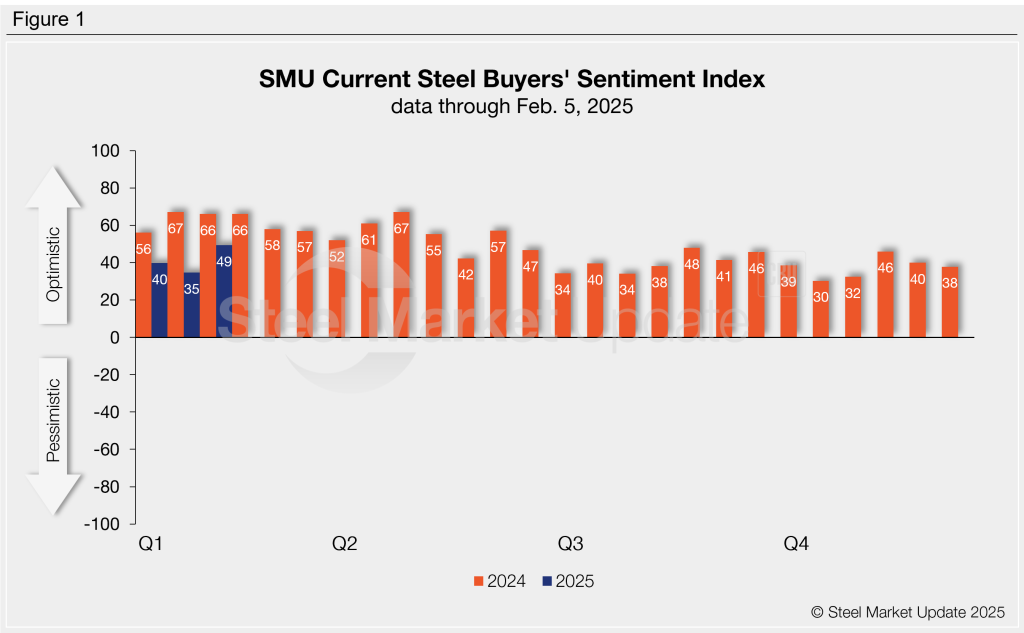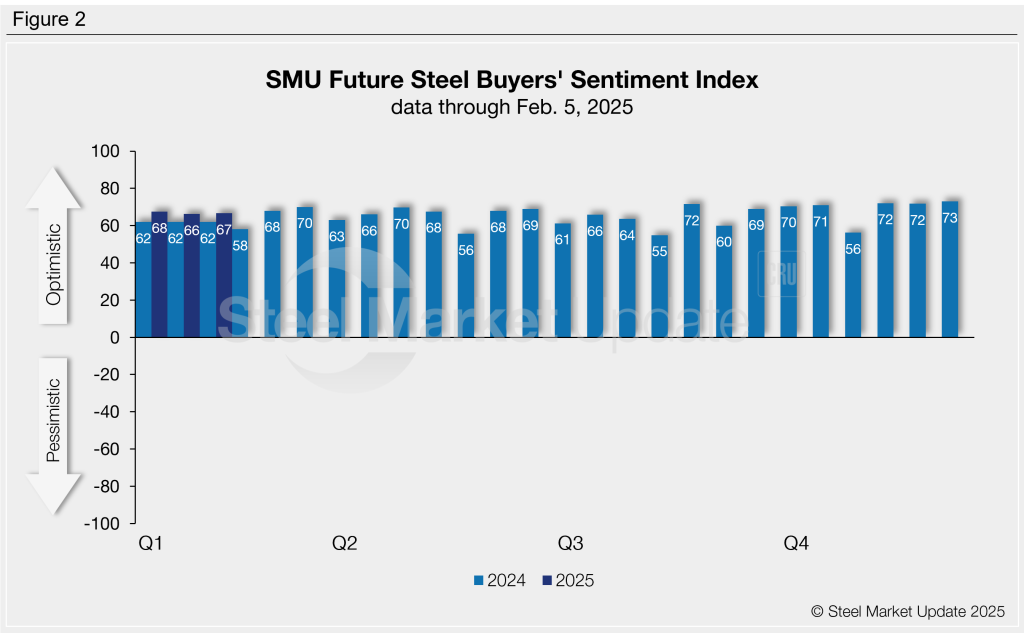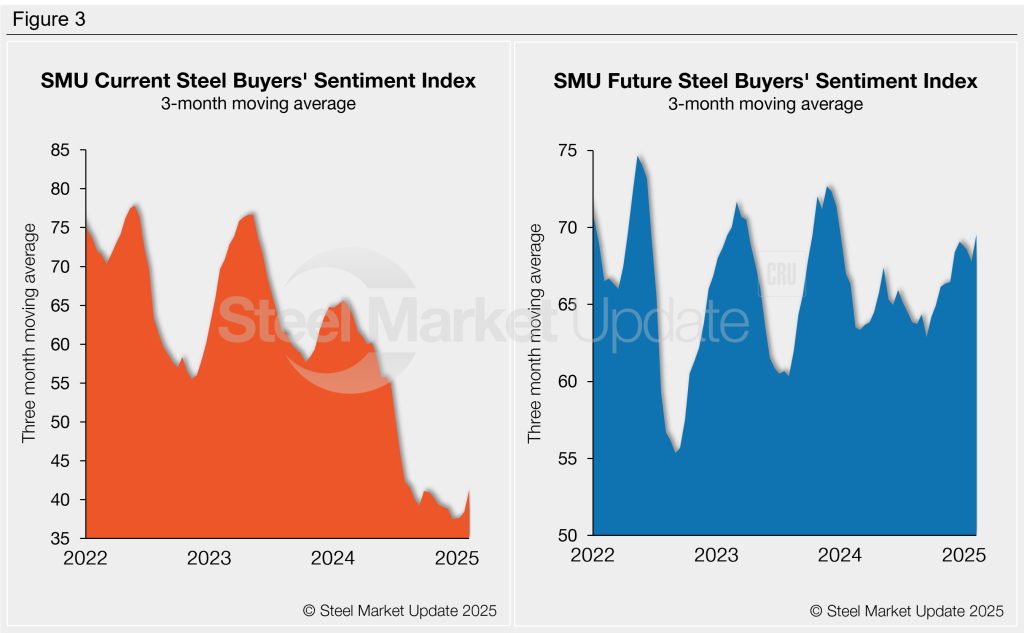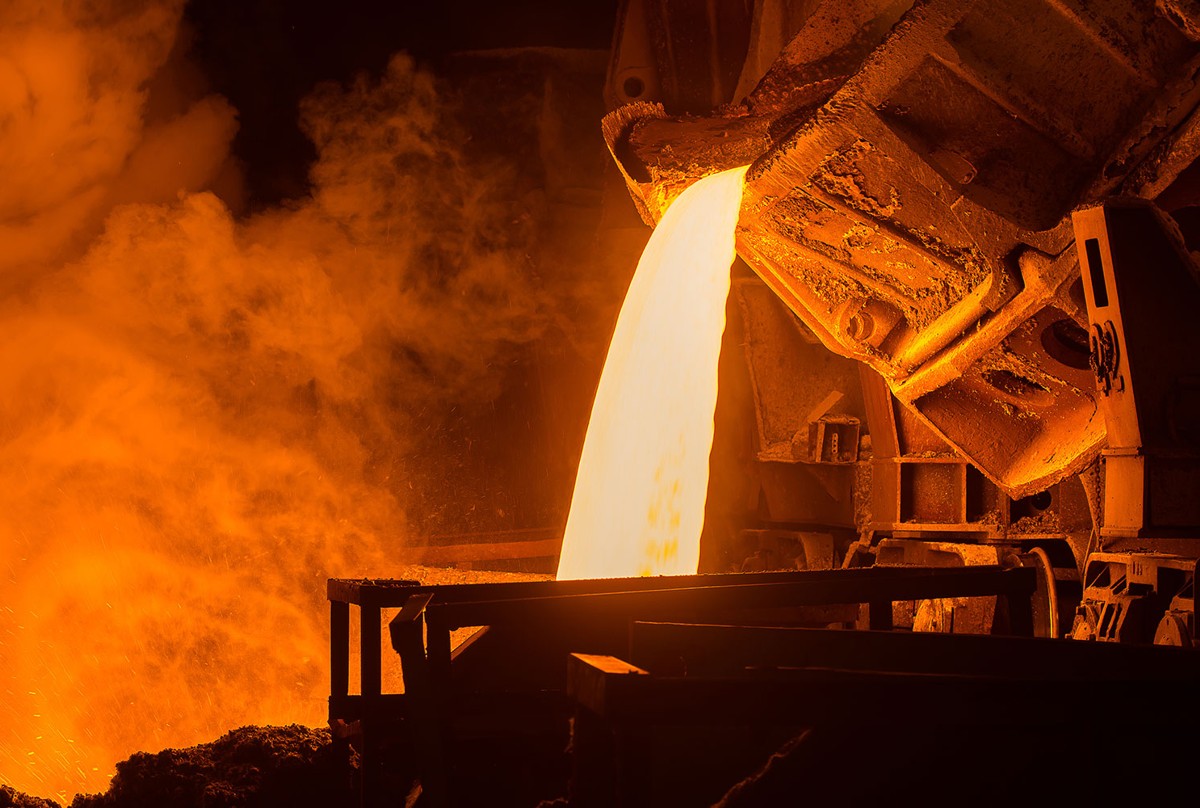Market Data

February 7, 2025
SMU Survey: Steel Buyers' Sentiment indicates increased optimism
Written by Brett Linton
After reaching multi-month lows in mid-January, SMU’s Steel Buyers’ Sentiment Indices rebounded this week to some of the highest readings recorded in months.
Current Buyers’ Sentiment indicates buyers are optimistic about their companies’ chances of success, the strongest confidence witnessed in eight months, though not as much as this time last year. Future Buyers’ Sentiment also shows buyers maintain a positive outlook for the first half of the year, more so than they did one year ago.
Every other week, we poll hundreds of steel buyers on how they rate their companies’ chances of success in today’s market, as well as their future business expectations for the next three to six months. This data is used to calculate our Current and Future Steel Buyers’ Sentiment Indices, metrics tracked since SMU’s 2008 inception.
Current Sentiment
SMU’s Current Buyers’ Sentiment Index jumped 14 points from mid-January to +49, marking the highest measure recorded since early June 2024 (Figure 1). Prior to this survey, Sentiment had hovered near multi-year lows since July 2024. In 2024, Current Sentiment averaged +48, while this time last year it was significantly stronger at +66.

Future Sentiment
Future Sentiment rose one point this week to +67. While slightly lower than most readings seen since October, Future Sentiment remains historically strong (Figure 2). Future Sentiment averaged +65 across 2024 and was slightly lower at +62 this time last year.

What SMU survey respondents had to say:
“It went from ‘wait for the election’ to ‘wait for the new year’ to ‘wait for inauguration’ to now just ‘wait.’ Not ideal out there.”
“We have solid contractual customers and see some moderate upside to upward pricing pressure.”
“We continue to be profitable, but at volumes that are below expectation.”
“I wish our backlogs were a bit stronger, but we’re doing OK.”
“Expect higher future volumes will mean much better results.”
“Still favorable raw material prices.”
“If prices spike as result of tariffs, the OEM/manufacturing space may be squeezed.”
Sentiment trends
When analyzed as a three-month moving average, both Sentiment Indices saw gains this week compared to two weeks prior (Figure 3). The Current Sentiment 3MMA rose to a six-month high of +41.26 as of Feb. 5, and the Future Sentiment 3MMA jumped to a 13-month high of +69.54.

About the SMU Steel Buyers’ Sentiment Index
The SMU Steel Buyers Sentiment Index measures the attitude of buyers and sellers of flat-rolled steel products in North America. It is a proprietary product developed by Steel Market Update for the North American steel industry. Tracking steel buyers’ sentiment is helpful in predicting their future behavior. A link to our methodology is here. If you would like to participate in our survey, please contact us at info@steelmarketupdate.com.







